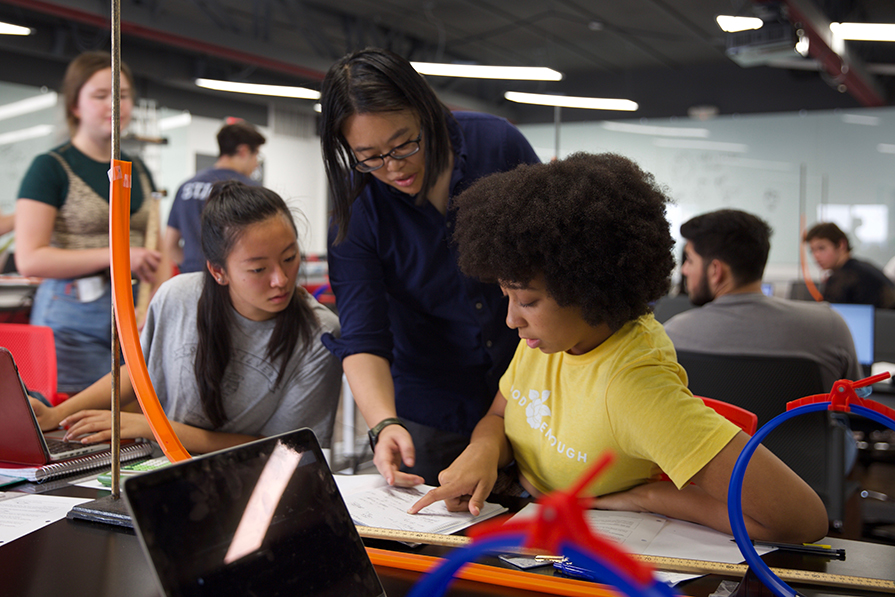
This fall, 11 new tenure-track faculty members joined Scripps College. As part of our ongoing series on Scripps’ faculty, the Office of Marketing and Communications sat down with Janet Sheung to discuss math, painting, and how life has a will of its own—even at the cellular level.
In addition to her teaching and research, Sheung is also using her 3D printer to make personal protective equipment for medical personnel during the COVID-19 pandemic. In early April, Sheung donated 70 face shields to Totally Kids Rehabilitation Hospital in Loma Linda, California. She plans to print additional shields as the need for protective equipment continues, and is accepting donations to help cover the cost of printing.
Marketing and Communications: What initially sparked your interest in math and physics?
Janet Sheung: I was born in Hong Kong when it was still a British colony, but with return to Chinese rule imminent. My parents anticipated instability and big changes to society, so my mother took her children to the US. I was seven; I was terrified; I knew a tiny bit of English and nothing else. I didn’t understand what my teachers or classmates were saying to me, until they passed out the math worksheets. Math still worked! So, I started teaching myself math, until I got to the point where there were no more math classes to take at my high school.
One day, an English teacher introduced me to a physics teacher and encouraged me to ask a lot of questions. Later, that physics teacher introduced me to physics researchers. After reading a few books about black holes, I realized that I liked math even more when it was describing the world around me.
MC: One of your areas of expertise is biophysics. What topics does that field explore?
JS: Biophysics is a very broad field. It has only biology and physics in its name, but it touches on engineering, chemistry, and all sorts of subjects. The world is made up of atoms, inorganic matter that we can understand using the laws of physics. But, put enough atoms together in the right ways and we get organic matter, and then life! So, physics can also help us understand life. And there are practical applications, too: Increasing our understanding of the physics of life—for example, how muscles exert force and how proteins move—inspires us to build better prosthetic limbs, and even design better robots.
MC: What classes are you most excited about teaching at the Keck Science Department?
JS: It’s a very exciting time at the W.M. Keck Science Department! This semester, I’m teaching an electronics lab course where students are building contraptions of their own design. Last semester, I helped design a physics teaching lab for the new Scripps-Pitzer Science Center building. I want to get students comfortable not just with scientific equipment, but with scientific inquiry and how scientists work. I want students to feel empowered to pursue their own complex questions, break those questions down into solvable problems, and articulate what they’ve learned to others.
Most people don’t realize that scientific research is almost like running a small business, with the government and society as our customers. We basically go to the government and say: here’s a question that, if answered scientifically, would benefit humanity; please give us money to answer this question. In my upper-division physics lab, I include a mock grant-funding cycle, which I hope will teach students how to come up with a viable plan to answer scientific questions in ways that are reproducible and that help people.
MC: Is there a fun fact about yourself that you’d like to share with the community?
JS: I love pictures and I often think in pictures. Before becoming an expert at building microscopes and making pictures a part of my work in that way, I did some drawing and painting, and I’d like to get back into that. I hope to get good enough that I can be a researcher who has scientific equipment over one shoulder and an easel over the other shoulder!

